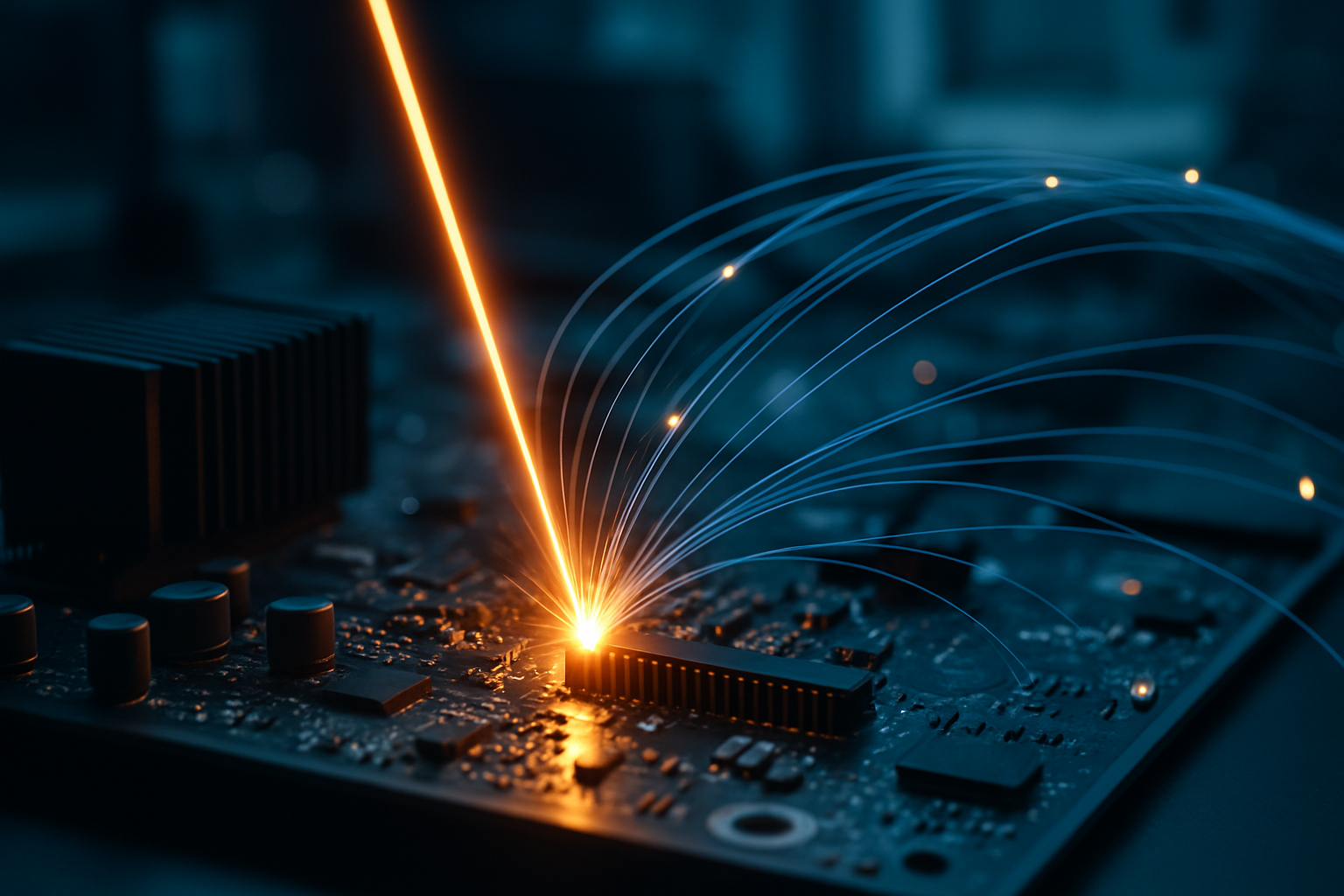Optical Interconnects: Light-Speed Data Transfer in Tomorrow's Computers
In the ever-evolving landscape of computer technology, a groundbreaking innovation is poised to revolutionize data transfer speeds and efficiency. Optical interconnects, a cutting-edge technology that uses light to transmit data between computer components, are set to transform the way our machines process and communicate information. This leap forward promises to overcome the limitations of traditional copper-based connections, ushering in a new era of lightning-fast computing.

Enter optical interconnects. By harnessing the power of light, these innovative components can transmit data at speeds that dwarf their copper counterparts. The technology works by converting electrical signals into optical ones, which can then be transmitted through specialized waveguides or fiber optic cables. This approach not only dramatically increases data transfer speeds but also reduces power consumption and heat generation – two critical factors in modern computing.
A Brief History of Optical Computing
The concept of using light for computing isn’t new. Scientists and engineers have been exploring the potential of optical computing since the 1960s. However, it’s only in recent years that the technology has become viable for practical applications in consumer and enterprise computing.
Early experiments with optical computing focused on creating entire optical computers, where all processing would be done using light. While this concept proved challenging to implement on a large scale, it laid the groundwork for the development of optical interconnects.
In the 1990s and 2000s, researchers began to explore the potential of integrating optical components into traditional electronic systems. This hybrid approach, combining the best of both worlds, has paved the way for the optical interconnect technology we see emerging today.
The Inner Workings of Optical Interconnects
At its core, an optical interconnect system consists of three main components: a transmitter, a waveguide or fiber optic cable, and a receiver. The transmitter, typically a laser or LED, converts electrical signals into pulses of light. These light pulses then travel through the waveguide or fiber optic cable, which can be integrated directly into the computer’s circuitry or used to connect separate components.
At the receiving end, a photodetector converts the light signals back into electrical impulses that can be processed by the computer’s electronic components. This conversion process happens at incredible speeds, allowing for data transfer rates that can reach terabits per second – orders of magnitude faster than current copper-based interconnects.
Overcoming Challenges: From Lab to Market
While the potential of optical interconnects is immense, bringing this technology to market has not been without its challenges. One of the primary hurdles has been the integration of optical components with existing silicon-based electronics. Traditional silicon is not an ideal material for manipulating light, which has led researchers to explore alternative materials and manufacturing techniques.
Recent breakthroughs in silicon photonics have made significant strides in addressing this issue. By carefully engineering silicon structures at the nanoscale, scientists have created components that can effectively guide and manipulate light signals. This development has opened the door for more widespread adoption of optical interconnect technology in consumer and enterprise computing systems.
Another challenge has been the cost of manufacturing optical components at scale. As with many emerging technologies, the initial production costs for optical interconnects have been high. However, as manufacturing processes improve and economies of scale come into play, these costs are expected to decrease significantly in the coming years.
The Future of Computing: Light-Speed Ahead
As optical interconnect technology continues to mature, its impact on the computing landscape is expected to be profound. Data centers, which form the backbone of our digital infrastructure, stand to benefit enormously from the increased speeds and reduced power consumption offered by optical interconnects. This could lead to more efficient cloud computing services and faster internet speeds for users worldwide.
In the realm of personal computing, optical interconnects could pave the way for ultra-thin, high-performance laptops and tablets. By reducing the need for bulky copper wiring, device manufacturers could create sleeker, more powerful machines that consume less energy and generate less heat.
Looking further into the future, the widespread adoption of optical interconnects could serve as a stepping stone towards fully optical computing systems. While still largely theoretical, such systems could potentially process information at the speed of light, opening up new frontiers in computational power and efficiency.
Market Impact and Pricing
As optical interconnect technology moves from the lab to commercial products, its market impact is expected to be significant. Industry analysts predict that the global optical interconnect market could reach $17.1 billion by 2026, growing at a compound annual growth rate of 12.6% from 2021.
In terms of pricing, optical interconnect components are currently more expensive than their copper-based counterparts. However, as manufacturing processes improve and adoption increases, prices are expected to decrease. Early adopters in the data center and high-performance computing sectors are likely to see the most immediate benefits, justifying the higher initial costs.
For consumer devices, the integration of optical interconnects is likely to be gradual. High-end laptops and desktops may feature limited optical interconnect technology in the next few years, with prices reflecting the premium nature of the technology. As the technology becomes more widespread, consumers can expect to see optical interconnects in mid-range devices, potentially with only a modest price increase over traditional models.
The dawn of optical interconnects marks an exciting new chapter in the story of computing. As this technology continues to evolve and mature, it promises to push the boundaries of what’s possible in data processing and communication. From faster, more efficient data centers to sleeker, more powerful personal devices, the light-speed future of computing is just over the horizon.





